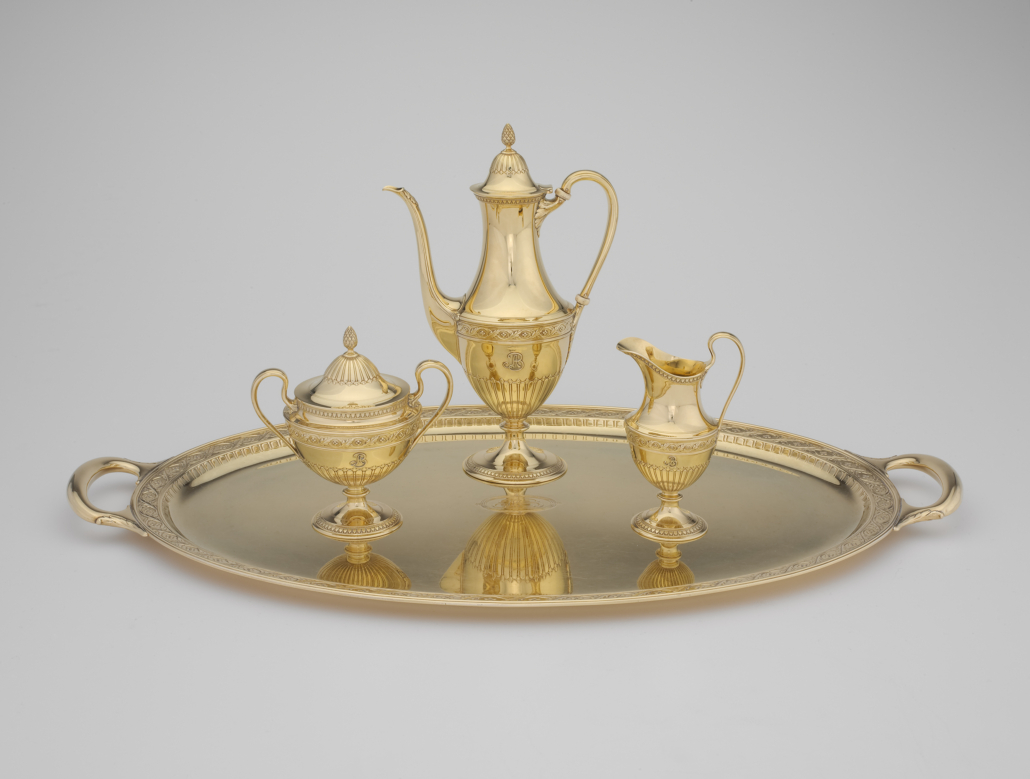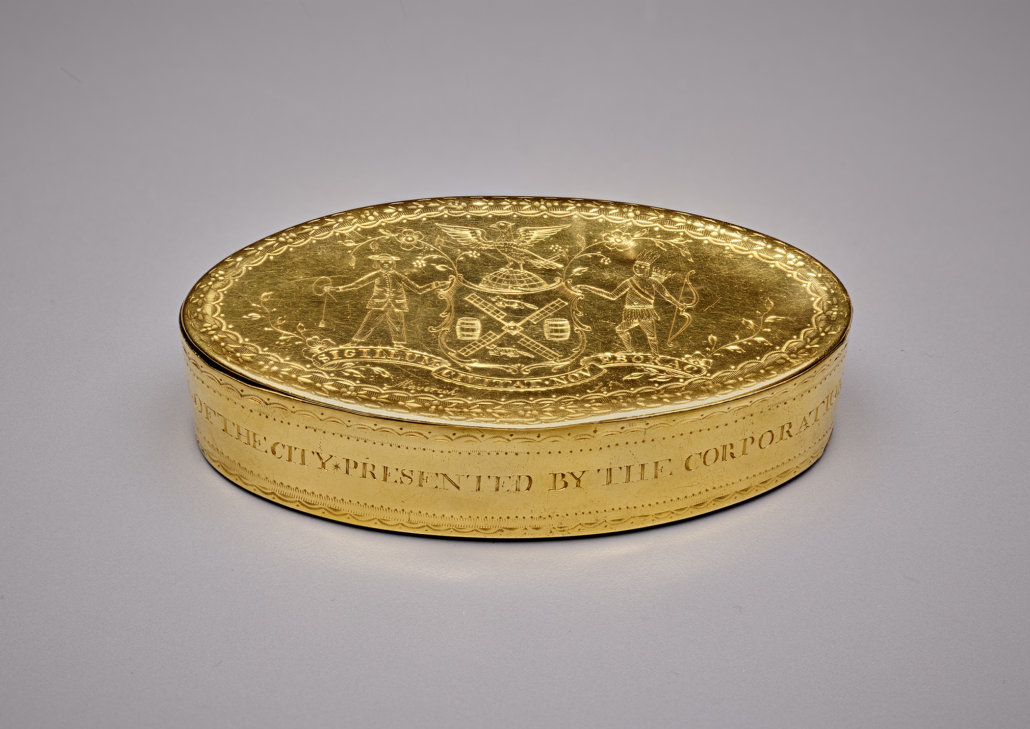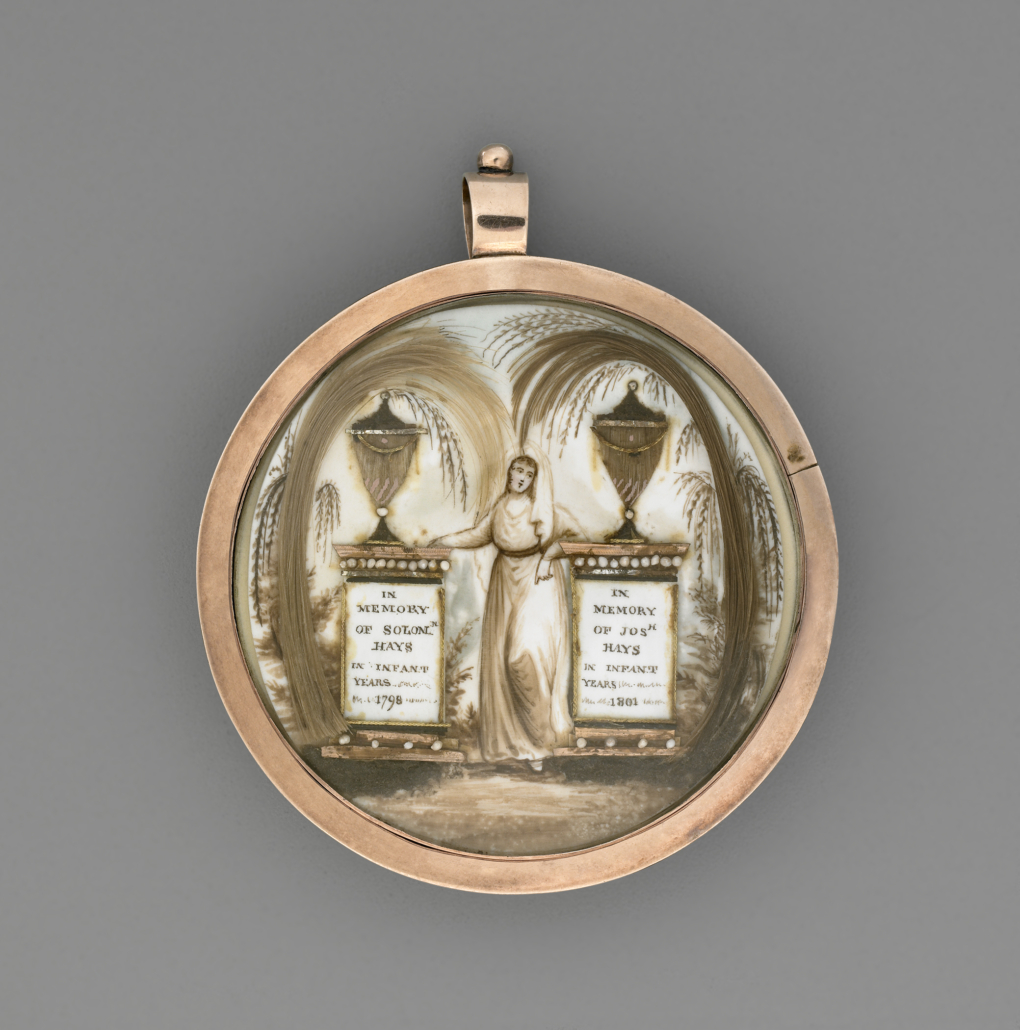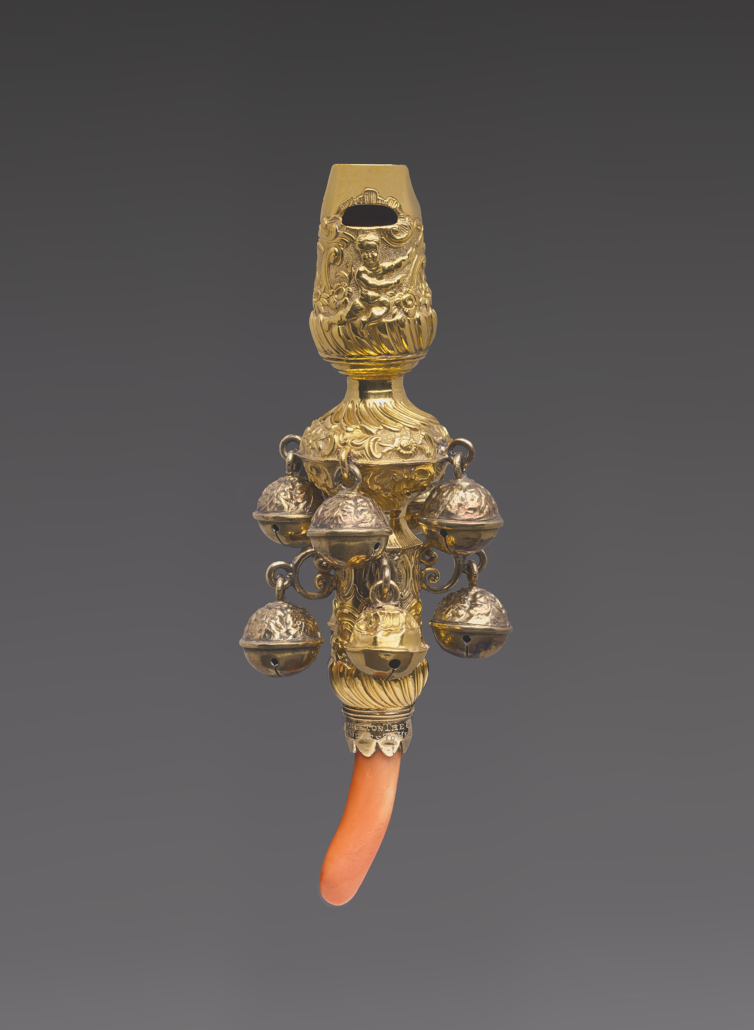Gold in America: Artistry, Memory, Power

John Dixwell,
Ring, Boston, 1705–25. Gold.
Yale University Art Gallery
For millennia, gold’s warm glow, resistance to corrosion, and rarity have made it a preferred material for objects meant to convey prestige, authority, or devotion. From February 25 through July 10, 2022, the Yale University Art Gallery presents Gold in America: Artistry, Memory, Power, the first exhibition since 1963 to survey the role of gold in American art and culture.
Organized by John Stuart Gordon, the Gallery’s Benjamin Attmore Hewitt Curator of American Decorative Arts, Gold in America showcases over 70 examples of American gold as well as paintings, photographs, and other works of art. Objects are drawn primarily from the Gallery’s permanent collection, augmented by select loans from the Yale Center for British Art, the Yale Peabody Museum of Natural History, and private collections.
“The Yale University Art Gallery houses the finest collection of early American gold of any museum,” says Gordon. “Gold objects were emblems of prestige or display that often became treasured heirlooms, proclaiming family pride or forging links to the history of the nation. Many of the leading silversmiths worked in gold, a tradition that continues to the present day. We invite audiences to connect with these rich stories and to experience how this gleaming metal—which has been worked since antiquity—continues to interact with our world. We hope that this exhibition brings forward new insights and research.”
Exhibition Highlights
Gold in America considers a range of objects spanning more than 400 years. The Freedom Box presented to Baron Friedrich Wilhelm von Steuben is an icon of American art. In 1784 the Corporation of the City of New York granted Baron von Steuben with the freedom of the city in gratitude for his leadership during the Revolutionary War. To commemorate the honor, the city commissioned goldsmith Samuel Johnson to make an oval box. Embellished with elaborate engraving by Peter Rushton Maverick, including the seal of the city on its lid, it is the earliest known example of the bright-cut engraving that would come to define metalwork from the Federal period. New York commissioned five Freedom Boxes, of which only two are known. Von Steuben bequeathed his box to his aide-de-camp, William North, and it remained in the North family until the renowned collector Francis P. Garvan acquired it for Yale in 1929.
A delicate thimble made about 1735 by Jacob Hurd, Massachusetts’s leading silversmith, for Elizabeth Gooch Hubbart, reveals the importance of gold as an embodiment of a family’s history. Following the death of her husband, the enterprising Hubbart established a shop in Boston selling lace, ribbons, and other fancy trimmings that would have been sewn onto hats and clothes. The thimble—more showy than practical—related to her profession, but it was also a symbol of her financial independence. Late in life, Hubbart married John Franklin, the brother of the statesman and printer Benjamin Franklin. After her death, the thimble descended in the female line of Hubbart’s family, and subsequent generations regarded it as an “old family relic” that offered a tangible link to their colonial ancestry.
A sumptuous coffee service designed between 1910 and 1911 by Tiffany and Company, the luxury retailer known for its exceptionally crafted jewelry and objects, demonstrates the continued allure of gold for commemorative objects into the 20th century. The decoration is neoclassical in style and shows a restraint that belies the extravagance of the material. Each vessel bears the initials of Alice Belin, and the set was likely given to her upon her marriage to Pierre S. du Pont in 1915. The same year, he became president of his family’s gunpowder business, E. I. du Pont de Nemours and Company. Belin’s father, Henry, was president of du Pont’s Pennsylvania subsidiary; the marriage was thus a consolidation of family and business interests. While beyond the reach of average consumers, this solid-gold coffee service was a gift befitting one of America’s manufacturing dynasties.
Additional key highlights include early colonial betrothal and mourning rings; rare coins made from ore mined during the Gold Rush; a pair of elaborate shoe buckles from the late 18th century that speaks to the wealth derived from the slave trade in the Caribbean; and works by contemporary artists who explore the medium’s historical associations as well as the environmental and human costs of its extraction from the earth.




